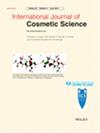A non-invasive way to enhance cosmetic efficacy by associating a cosmetic serum with a nanochip tapping
Abstract
Background
Skincare cosmetics have long been central to daily facial care routines, while recent years have seen a surge in the popularity of home beauty devices. Consumers increasingly seek more effective and efficient results from their beauty regimens while also expressing concerns about the potential risks of certain beauty procedures. Although various technological devices have been developed to meet these demands, research on the interactions between beauty devices and cosmetic products remains limited.
Methods
This in vivo study was conducted on 60 Chinese women of different ages and skin types. An assessment of the impact of a specific home beauty device, used after a standalone referential and marketed anti-ageing serum, on enhancing facial skin attributes (wrinkles, fine lines, radiance and hydration) was conducted. The device—a nanochip tapping tool with an ultra-fine surface—was evaluated alongside the serum under a half-face protocol. The study compared the efficacy of serum application alone to that achieved with the combined serum-device regimen.
Results
Marked reduction in ageing signs was reported for the serum alone, particularly for wrinkles (p < 0.001), fine lines (p < 0.001), radiance (p < 0.001) and hydration (p < 0.001) after 8 weeks. When paired with the nanochip device, efficacy was significantly amplified and enhanced global wrinkle reduction, nasolabial fold smoothness and firmness. There were no adverse effects on SC integrity, confirming that the serum–nanochip application preserved the integrity of the skin. All subjects found the nanochip easy to use and indicated perceived benefits.
Conclusion
The present study showed that the use of a nano-needle tapping device led to significantly enhanced global efficacy on some age-related facial signs under safe and skin-friendly conditions. This study highlights that the dual focus on merging both efficacy and safety was not only effective but also safe for use, thereby setting a solid foundation for future research and development.


 求助内容:
求助内容: 应助结果提醒方式:
应助结果提醒方式:


